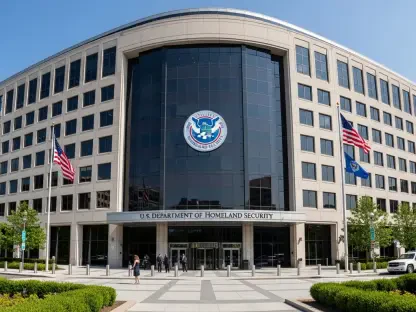In a bold move to confront the harrowing opioid crisis that has shattered countless lives across the state, Pennsylvania has unveiled a pioneering public website in August of this year to meticulously track the allocation of a staggering $2.2 billion in settlement funds. These resources, obtained through national agreements with opioid manufacturers and distributors, are intended to address a public health emergency that, despite a decline from over 5,000 unintended overdose deaths in past years to approximately 3,300 more recently, continues to demand urgent and sustained action. This digital platform not only symbolizes a commitment to transparency but also offers a window into how these funds are being deployed at the county level to combat addiction and its devastating effects. By making expenditure data accessible, the state aims to build trust among residents and ensure that every dollar is used effectively to save lives and rebuild communities torn apart by this epidemic.
Transparency and Accountability
Public Oversight through Technology
The launch of the Pennsylvania Opioid Settlement Data website marks a significant step toward public accountability in managing the massive settlement funds aimed at curbing the opioid epidemic. This online tool provides detailed, real-time insights into how the money is being spent across various counties, empowering residents to monitor progress and hold officials responsible for their decisions. A striking example of the platform’s utility can be seen in Philadelphia, where nearly $6 million of the $20 million spent by the end of last year was directed toward housing programs for the homeless. This allocation underscores the interconnected nature of opioid recovery and broader social challenges, revealing how funds are being tailored to address underlying issues. The website’s ability to break down such spending patterns ensures that the public can see tangible outcomes, fostering a deeper understanding of the crisis response.
Beyond individual county data, the platform serves as a catalyst for broader engagement by allowing stakeholders to evaluate the effectiveness of different initiatives. By presenting clear, accessible information, it enables community members to ask critical questions about whether funds are meeting the most pressing needs or if adjustments are necessary. This level of transparency is particularly vital in a state where the opioid crisis has left deep scars, as it helps rebuild confidence in public institutions tasked with managing such significant resources. Moreover, the visibility of spending priorities can inspire advocacy for underfunded areas, ensuring that no community is left behind in the fight against addiction. The digital dashboard thus stands as a powerful tool for oversight, bridging the gap between government action and public awareness.
Collaborative Development
The creation of the tracking website represents a remarkable collaboration between leading academic institutions and state organizations, highlighting the importance of collective expertise in addressing complex public health challenges. Researchers from Penn State University, Temple University, and the University of Pittsburgh worked alongside state entities to design a platform that not only compiles comprehensive spending data but also presents it in a user-friendly format. This partnership ensures that the information is both accurate and meaningful, providing a reliable resource for both officials and the public. The collaborative effort reflects a shared commitment to tackling the opioid crisis through informed, data-driven approaches that prioritize community needs over bureaucratic hurdles.
Equally important is the role this joint initiative plays in fostering trust among Pennsylvania’s residents, who have long demanded clarity on how settlement funds are utilized. By involving respected universities in the development process, the state signals a dedication to impartiality and rigor in reporting expenditure details. This trust is further reinforced by the platform’s capacity to support informed decision-making at all levels, as county leaders can access peer data to refine their strategies. The emphasis on collaboration also sets a precedent for future public health projects, demonstrating that combining academic insight with governmental action can yield innovative solutions. Ultimately, this partnership underscores the value of transparency as a cornerstone of effective crisis management, ensuring that data serves as a foundation for progress.
Local Control and Fund Allocation
Decentralized Funding Model
Pennsylvania’s approach to distributing the $2.2 billion in opioid settlement funds stands out due to its strong emphasis on local control, a strategy that differentiates it from many other states grappling with similar challenges. With 70% of the funds allocated directly to counties, 15% to cities and other entities such as district attorney offices, and the remaining 15% to the state, this model empowers local governments to tailor interventions to their unique circumstances. Unlike the majority of the 48 states receiving settlements, where only nine have adopted a similar structure, Pennsylvania’s framework encourages innovation by allowing counties to issue requests for proposals that address specific community needs. This decentralized system recognizes the diverse nature of the opioid crisis across regions, offering flexibility to design targeted solutions.
The benefits of this localized approach are evident in the potential for creative and responsive programming that directly reflects the challenges faced by individual communities. For instance, rural counties might prioritize access to treatment centers, while urban areas could focus on harm reduction strategies like needle exchange programs. By placing decision-making power in the hands of those closest to the issues, the state ensures that funds are not wasted on one-size-fits-all solutions that fail to resonate locally. However, this model also demands a high level of coordination to prevent overlap or inefficiency, as counties must align their efforts with broader state goals. The structure ultimately serves as a testing ground for innovative practices that could inspire other states to rethink their own funding mechanisms in addressing public health crises.
Challenges of Autonomy
While local control offers significant advantages, it also places substantial responsibility on county leaders to ensure that the settlement funds are used effectively and in line with their intended purpose. A key mandate requires that at least 85% of the money be directed toward opioid abatement, a safeguard inspired by historical missteps during the 1990s tobacco settlement when funds were often diverted to unrelated budget needs. This strict guideline aims to prevent similar misuse, but it demands meticulous planning and oversight from local officials who must balance multiple pressing priorities. The pressure to meet this requirement while addressing urgent community needs can create tension, especially in areas with limited administrative capacity to manage such large sums.
Compounding these challenges are the disparities in fund allocations across counties, which can hinder equitable implementation of programs. Some regions, due to smaller populations or lower settlement shares, receive amounts that restrict their ability to launch comprehensive initiatives, while larger counties may have more resources to experiment with diverse solutions. This uneven distribution risks widening gaps in access to critical services like treatment and prevention, potentially leaving vulnerable populations underserved. Addressing these disparities requires strategic collaboration among counties and state-level support to ensure that no area is disproportionately burdened. The autonomy granted to local leaders, while empowering, thus necessitates robust accountability measures to guarantee that the funds achieve maximum impact in combating the opioid epidemic.
Long-Term Strategy and Evolving Crisis
Sustained Effort Over Time
The extended timeline of the opioid settlement payments, stretching from earlier distributions to 2038, emphasizes the importance of viewing this funding as a long-term commitment rather than a quick fix to a deeply entrenched problem. Often described as a “marathon, not a sprint,” this perspective highlights the need for county and state leaders to balance immediate interventions—such as overdose prevention training for first responders—with sustainable, systemic changes like expanding access to recovery programs. The prolonged nature of the funding provides an opportunity to build infrastructure that can withstand future challenges, but it also requires careful pacing to avoid exhausting resources early on. This strategic foresight is essential to ensure that the impact of these funds endures over time.
Planning for the long haul also means anticipating shifts in community needs and adjusting priorities accordingly, as the opioid crisis is not static but influenced by social and economic factors. Leaders must invest in initiatives that lay the groundwork for lasting recovery, such as integrating mental health services into addiction treatment frameworks. At the same time, they face the challenge of demonstrating tangible results to maintain public support, even as outcomes may take years to fully materialize. The extended payment schedule offers a buffer to refine approaches based on early successes and failures, but it demands patience and discipline from all stakeholders. By focusing on both short-term relief and long-term transformation, Pennsylvania can create a resilient response to a crisis that has proven stubbornly persistent.
Adapting to New Threats
As the opioid crisis evolves, new and dangerous challenges continue to emerge, necessitating flexible and evidence-based responses from local and state authorities managing the settlement funds. One alarming trend is the increasing presence of contaminants like xylazine and medetomidine in the drug supply, which heighten the risk of overdose and complicate treatment efforts. These emerging threats require counties to stay agile, adapting programs to address shifting dynamics through measures such as updated training for medical personnel and expanded harm reduction strategies. Staying ahead of these changes is critical to ensuring that interventions remain relevant and effective, even as the nature of addiction itself transforms in unpredictable ways.
Despite the substantial resources provided by the settlement, the funds fall short of covering all aspects of the crisis, particularly when considering broader social drivers like unemployment, mental health access, and food insecurity that fuel substance abuse. These persistent funding gaps highlight the limitations of relying solely on this money to solve a multifaceted problem, as federal disinvestment in public health exacerbates the strain on local budgets. To maximize impact, counties must prioritize evidence-based initiatives while seeking additional resources through partnerships or grants. The evolving crisis serves as a reminder that adaptability, coupled with a commitment to addressing root causes, is essential for turning the tide against opioid addiction in Pennsylvania.
Reflecting on a Path Forward
Looking back, the rollout of the public website to track Pennsylvania’s $2.2 billion in opioid settlement funds stood as a pivotal moment in the state’s battle against a relentless public health crisis. The collaborative effort behind the platform, alongside the decentralized funding model, demonstrated a resolve to empower communities while maintaining rigorous oversight. Moving forward, the focus must shift to bridging funding disparities among counties by encouraging resource-sharing and state-level support for underfunded regions. Additionally, investing in research to counter emerging drug contaminants should remain a priority, ensuring programs evolve with the crisis. Strengthening partnerships between local governments, academic institutions, and community organizations will be crucial to sustaining momentum. By leveraging the transparency of the tracking tool to refine strategies and secure supplementary funding, Pennsylvania can build a more comprehensive response, addressing not just addiction but its underlying causes for a healthier future.









